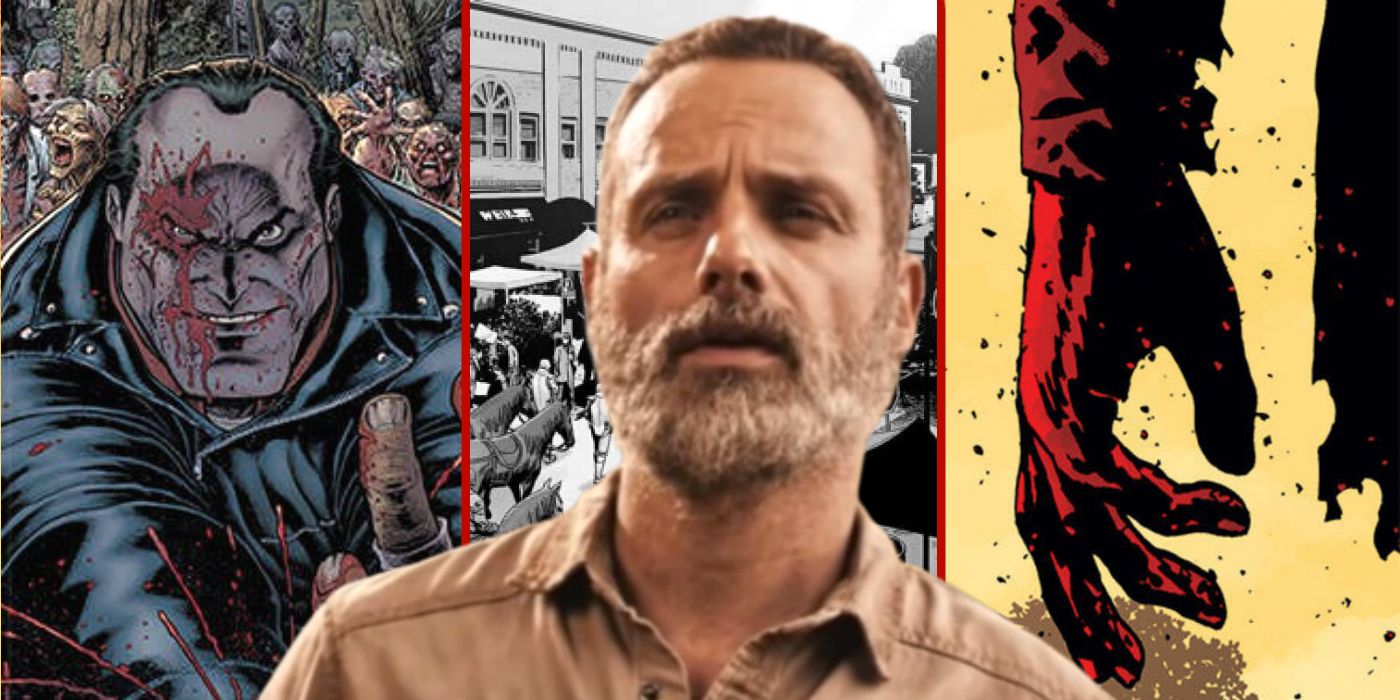
The Walking Dead TV show made many changes to the comic books, yet its biggest was much more subtle, though no less influential. Comic changes in The Walking Dead show are not uncommon, with some of the latter’s most influential characters not even existing in the former. Daryl Dixon, for example, is widely regarded as one of The Walking Dead‘s best-ranked characters, despite not being part of the source material.
Daryl is responsible for some of The Walking Dead‘s best episodes and character arcs, proving how the show was not afraid to make positive changes where necessary. Many of these changes have resulted in the adaptation becoming entirely its own thing, with The Walking Dead‘s many spin-offs making it its own franchise that is much differentiated from the comics. However, these more overt, obvious differences are not the biggest T he Walking Dead made to the source material, with the most influential change actually being much more subtle.
The Walking Dead’s Pacing Was Radically Different From The Comics
The Walking Dead TV Show Was Considerably Slower Paced Than The Source Material

The big change in question was The Walking Dead‘s pacing. As alluded to, this change is not as evident as characters like Daryl being invented, or Rick’s relationship with Michonne rather than Andrea as it is in the comics. Instead, the pacing of The Walking Dead is more subtle, though those familiar with the original comic books will notice how radically different it is. In the comic books, events happened much quicker than they were presented in the show.
One major example of the different pacing in the show is Rick’s group finding the prison and the conflict they have with The Governor. The Walking Dead TV show does not introduce the prison or The Governor until the third season. In the comic books, the prison is found at the end of the second volume and The Governor is introduced in volume 5. As proven, The Walking Dead‘s show timeline is much slower, deliberately so, than the source material, in order to better flesh out characters, storylines, and arcs.
The cannibals and the search for Washington all happen in one volume of The Walking Dead ‘s comics, specifically volume 11, with Alexandria being found in volume 12…
Similarly, the storyline after The Governor involving Rick’s group searching for safety and encountering cannibals happens much quicker. The cannibals and the search for Washington all happen in one volume of The Walking Dead‘s comics, specifically volume 11, with Alexandria being found in volume 12. In The Walking Dead show, the storyline with the cannibals takes up the latter half of season 4 and the first episodes of season 5, with Alexandria not being found until the back half of season 5, typifying The Walking Dead TV show’s slower pacing.
Shane’s Death In The Walking Dead Illustrates How Different The Show Was To The Comics
A Major Storyline In Two Seasons Of The Walking Dead Was Resolved Much Quicker In The Comics
Perhaps the most obvious example of The Walking Dead TV show’s sped-up pacing is the death of Shane. In the TV show, Shane survives the entire first two seasons and is killed on Hershel Greene’s farm by Rick in the penultimate episode of season 2. However, Shane never makes it to the Greene farm in the comics and is killed by Carl at the end of The Walking Dead‘s first volume, six issues into the story. Evidently, the comic books have a much quicker pacing than the show’s chronology, with major events being more drawn out in the latter.

Shane’s death is one of the most important early storylines in The Walking Dead TV show. The adaptation allowed for Shane’s character to be more fleshed out, given that he survived long enough to find Hershel’s farm. By the time of his death, it felt like a major turning point for Rick’s character as well as the overall vibe of the group of survivors. Although it was depicted as such in the comics too, the more drawn-out timeline of the show translated this better.
The Walking Dead Diverged More And More From The Comics As It Went On
The Show Eventually Crafted Its Own Identity
As explored, the first five or six seasons of The Walking Dead followed the comics relatively closely. While some changes were made and many storylines were slowed down to be fleshed out further, the overarching plot points of the comics were shown in The Walking Dead TV show. That said, as the show grew, it began to diverge from the comics more drastically. The Walking Dead‘s popularity allowed the show to forge its own identity and become a franchise separate from the comics.
The Walking Dead Spin-Offs
Premiere Date
Fear the Walking Dead
August 23, 2015
The Walking Dead: World Beyond
October 4, 2020
Tales of the Walking Dead
August 14, 2022
The Walking Dead: Dead City
June 18, 2023
The Walking Dead: Daryl Dixon
September 10, 2023
The Walking Dead: The Ones Who Live
February 25, 2024
More Tales from the Walking Dead Universe
Unknown
This is exemplified by the many Walking Dead spin-offs. The Walking Dead: Daryl Dixon, for example, takes place in an entirely different country and centers on a character that did not exist in the comics. Other spin-offs like The Walking Dead: Dead City follow storylines set years after the original show based on Maggie and Negan, while The Ones Who Live resurrected Rick who died in the original comic books. Above the many other changes, these spin-offs prove that The Walking Dead became its own thing, which arguably spiraled from the early seasons’ slower, more deliberate pacing.





